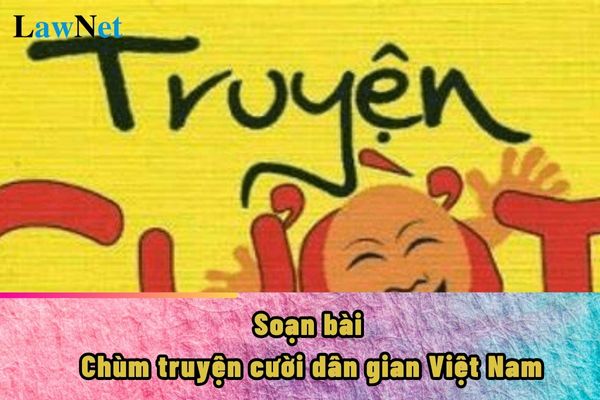What are guidelines on preparing the lesson on Collection of Vietnamese folk humorous stories for students in Vietnam? What are educational methods for grade 8 Literature in Vietnam?
What are guidelines on preparing the lesson on Collection of Vietnamese folk humorous stories for students in Vietnam?
The "Collection of Vietnamese folk humorous stories" is a text that grade 8 students will study.
Students can refer to the following guidelines on preparing the lesson on Collection of Vietnamese folk humorous stories:
|
Guidelines on preparing the lesson on Collection of Vietnamese folk humorous stories * Detailed analysis of two stories: |
*Note: The information is for reference only./.

What are guidelines on preparing the lesson on Collection of Vietnamese folk humorous stories for students in Vietnam? What are educational methods for grade 8 Literature in Vietnam? (Image from the Internet)
Does the educational method for grade 8 Literature subject have an orientation towards creativity for students in Vietnam?
Based on the General Education Program for Literature, issued together with Circular 32/2018/TT-BGDDT, the teaching method for grade 8 Literature has general guidelines as follows:
The Literature program applies educational methods oriented towards integrated and differentiated teaching; diversifying forms of organization, methods, and teaching tools; promoting active, proactive, and creative learning and the application of students' knowledge and skills.
Based on the program, teachers flexibly and actively build and organize lessons according to the following orientation:
- Implement required intra-disciplinary integration (both knowledge and skills), interdisciplinary integration, and the integration of prioritized educational content (trans-disciplinary); carry out differentiated teaching according to students' levels across all grades and support career orientation at high schools.
- Train students in methods of reading, writing, speaking, and listening; practice and experience in receiving and applying Vietnamese and literary knowledge through various classroom and extracurricular activities; focus on using teaching tools, overcoming teaching by rote reading, develop thinking, and practicing the use of tools for students.
- Strengthen and promote students' positiveness and independence; allocate more time for students to study textbooks and learning materials, practice, present, discuss, and defend their learning outcomes to enable them to read, write, speak, and listen according to different requirements and levels; assess and evaluate students' fulfillment of their learning tasks.
Thus, developing the teaching method for grade 8 Literature will have a focus on student creativity.
What are the required achievements in the reading section of the grade 8 Literature program in Vietnam?
According to Section IV of the General Education Program for Literature, issued together with Circular 32/2018/TT-BGDDT, the requirements for reading comprehension in the grade 8 Literature program are as follows:
READING
READING COMPREHENSION
Literary texts
Reading comprehension of content
- Identify the essence of the text; recognize significant details, topics, stories, and characters within the entirety of the work.
- Recognize and analyze the theme, idea, message the text wants to convey to the reader through its artistic form; analyze some bases to determine the theme.
- Recognize and analyze the emotions, feelings, main inspiration of the writer expressed through the text.
Reading comprehension of forms
- Recognize and analyze the role of imagination in receiving a literary text.
- Recognize some elements of humorous stories, historical stories such as plot, setting, character, language.
- Recognize and analyze single-stranded and multi-stranded plots.
- Recognize and analyze the effects of major poetic techniques in satirical poetry.
- Recognize some elements of Tang and quatrain poetry rhyming rules, such as composition, coherence, rule, rhyme, rhythm, antithetical structure.
- Recognize and analyze the uniqueness of a poem through its vocabulary, imagery, composition, flow of emotion.
- Recognize and analyze some comedic elements such as conflict, action, character, dialogue, satirical technique.
Relate, compare, connect
- Understand that each reader may have a different way of receiving a literary text; learn to respect and learn from others' ways of reception.
- Comment on the content reflection and view of life and humans presented by the author in the literary text.
- State the changes in thought, emotions, or lifestyle after reading a literary work.
Reading extension
- In one academic year, read a minimum of 35 literary texts (including texts guided to read online) similar in genre and length to texts studied.
- Memorize some favorite poetry sections or poems in the program.
Argumentative text
Reading comprehension of content
- Identify the thesis, arguments, reasoning, and evidence in the text.
- Analyze the relationship between thesis, arguments, reasoning, and evidence; the role of arguments, reasoning, and evidence in expressing the thesis.
Reading comprehension of forms
Distinguish between objective reasoning and checkable evidence with the writer's subjective opinions and evaluations.
Relate, compare, connect
Relate the content presented in the text to contemporary societal issues.
Reading extension
In one academic year, read at least 9 argumentative texts (including texts guided to read online) similar in length to texts studied.
Informational text
Reading comprehension of content
- Analyze the basic information of the text.
- Analyze the role of details in expressing the basic information of the text.
Reading comprehension of forms
- Recognize and analyze the characteristics of several types of informational texts: text explaining a natural phenomenon; text introducing a book or film; identify the relationship between text characteristics and its purpose.
- Recognize and analyze the method of information presentation in texts such as chronological order, cause-effect relation, subject importance, or comparison and contrast methods.
Relate, compare, connect
- Relate the information in the text to contemporary societal issues.
- Evaluate the effectiveness of non-verbal media in a specific text.
Reading extension
In one academic year, read at least 18 informational texts (including texts guided to read online) that are equivalent in style and length to texts studied.

